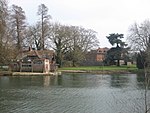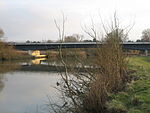Carmel College, Oxfordshire
1948 establishments in England1997 disestablishments in EnglandBoarding schools in OxfordshireDefunct schools in OxfordshireEducational institutions disestablished in 1997 ... and 7 more
Educational institutions established in 1948Grade II* listed buildings in OxfordshireGrade II* listed educational buildingsGrade II listed buildings in OxfordshireGrade II listed educational buildingsJewish schools in EnglandUse British English from February 2023
Carmel College was founded in 1948 as a British, Jewish boarding school for boys, modelled on British public schools. In later years it was, to some extent, co-educational, and there were a few non-Jewish day pupils. It closed down in 1997. Carmel College alumni are known as "Old Carmelis"; in 1973 the school was referred to as the "Jewish Eton" by The Observer correspondent, Chaim Bermant.
Excerpt from the Wikipedia article Carmel College, Oxfordshire (License: CC BY-SA 3.0, Authors).Carmel College, Oxfordshire
Constitution Hill, South Oxfordshire Crowmarsh
Geographical coordinates (GPS) Address Nearby Places Show on map
Geographical coordinates (GPS)
| Latitude | Longitude |
|---|---|
| N 51.5853 ° | E -1.1212 ° |
Address
Constitution Hill
OX10 8BU South Oxfordshire, Crowmarsh
England, United Kingdom
Open on Google Maps








